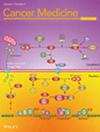Financial Toxicity Among Cancer Patients in Slovenia
Abstract
Background
The ageing population, increasing medical costs and a number of newly diagnosed cancer cases among the working population are increasing the financial burden on healthcare systems. The extent of financial toxicity in Slovenian patients has been insufficiently researched, as has its impact on quality of life (QoL).
Methods
To evaluate financial toxicity, the Functional Assessment of Chronic Illness Therapy (COST-FACIT) questionnaire was translated into Slovenian, validated, introduced and compared with the European Organisation for Research and Treatment of Cancer Core Quality of Life Questionnaire (EORTC QLQ-C30). Additional questions were incorporated into the questionnaire to further quantify and objectify financial toxicity.
The study was cross-sectional. The statistical analysis was based on descriptive and inferential statistics and exploratory data analysis.
Results
Out of 590 analysed participants, financial toxicity was absent in 57.2% but present at mild to moderate levels in 42.8%. Key risk factors included lower income, age ≤ 65, employment, active oncologic treatment, rural residence and religious affiliation. Post hoc analyses showed higher financial toxicity in those with ≤ 600 EUR monthly income, employed patients and spiritual individuals, while cancer type showed no significant differences. The correlation between financial toxicity and QoL was mild. Objective measures of financial toxicity include direct costs (e.g., transportation, supplements and medical devices) and indirect costs (e.g., loss of income) associated with disease and treatment, which burdened more than 40% of the studied population.
Conclusions
The COST-FACIT proved to be a helpful screening tool for identifying patients at risk, even in a public healthcare system such as the Slovenian system. On average, financial toxicity is low due to the publicly funded financial system covering the treatment and rehabilitation of malignant diseases. The age structure of cancer patients and secure pension income further contribute to this outcome.


 求助内容:
求助内容: 应助结果提醒方式:
应助结果提醒方式:


